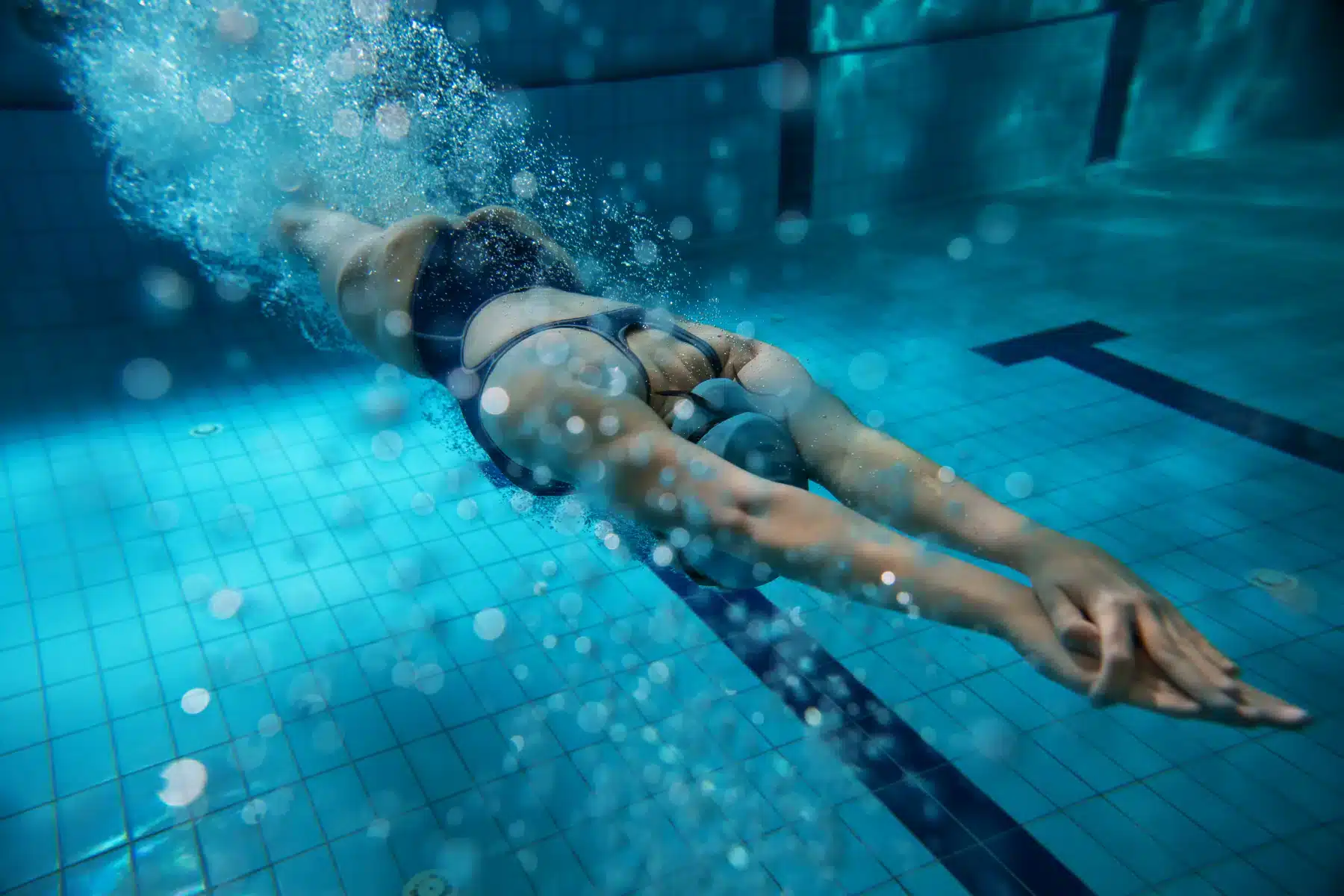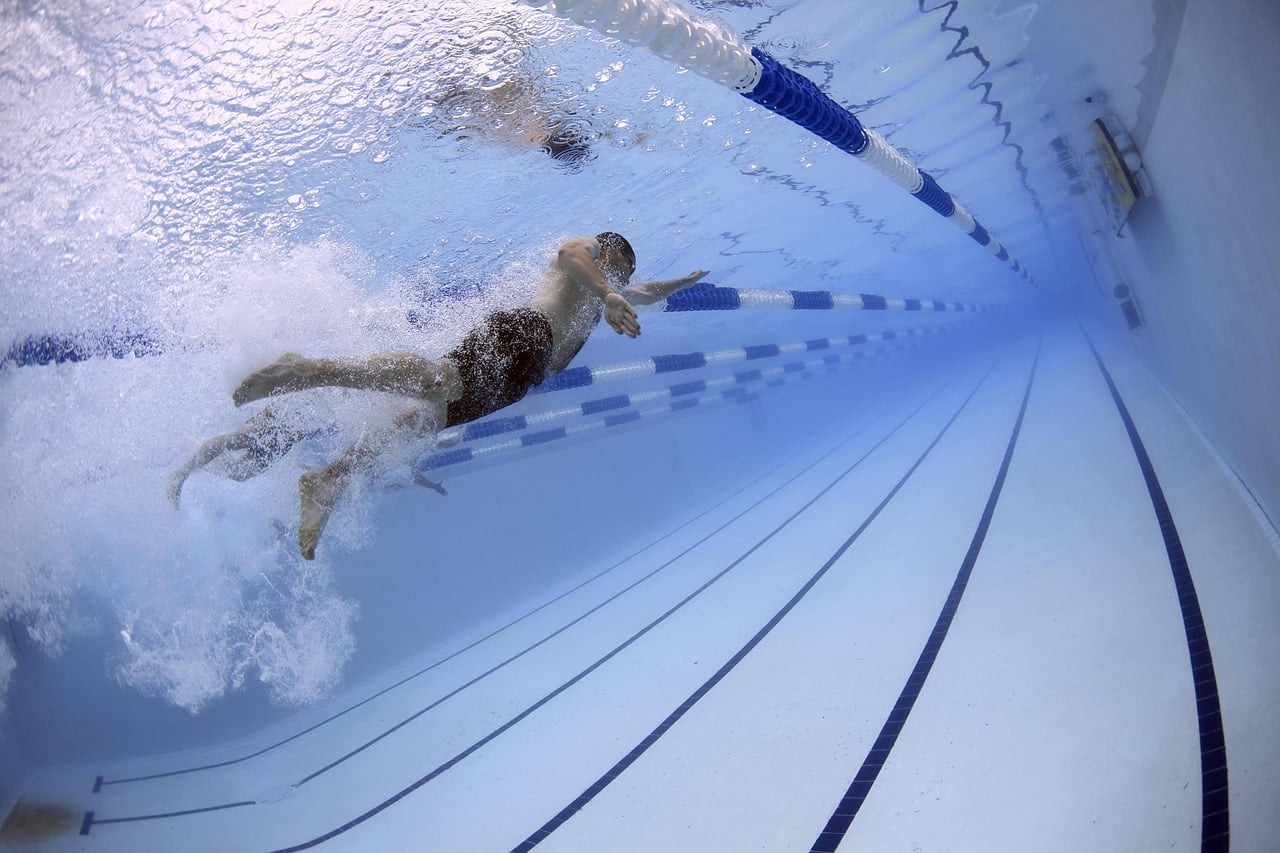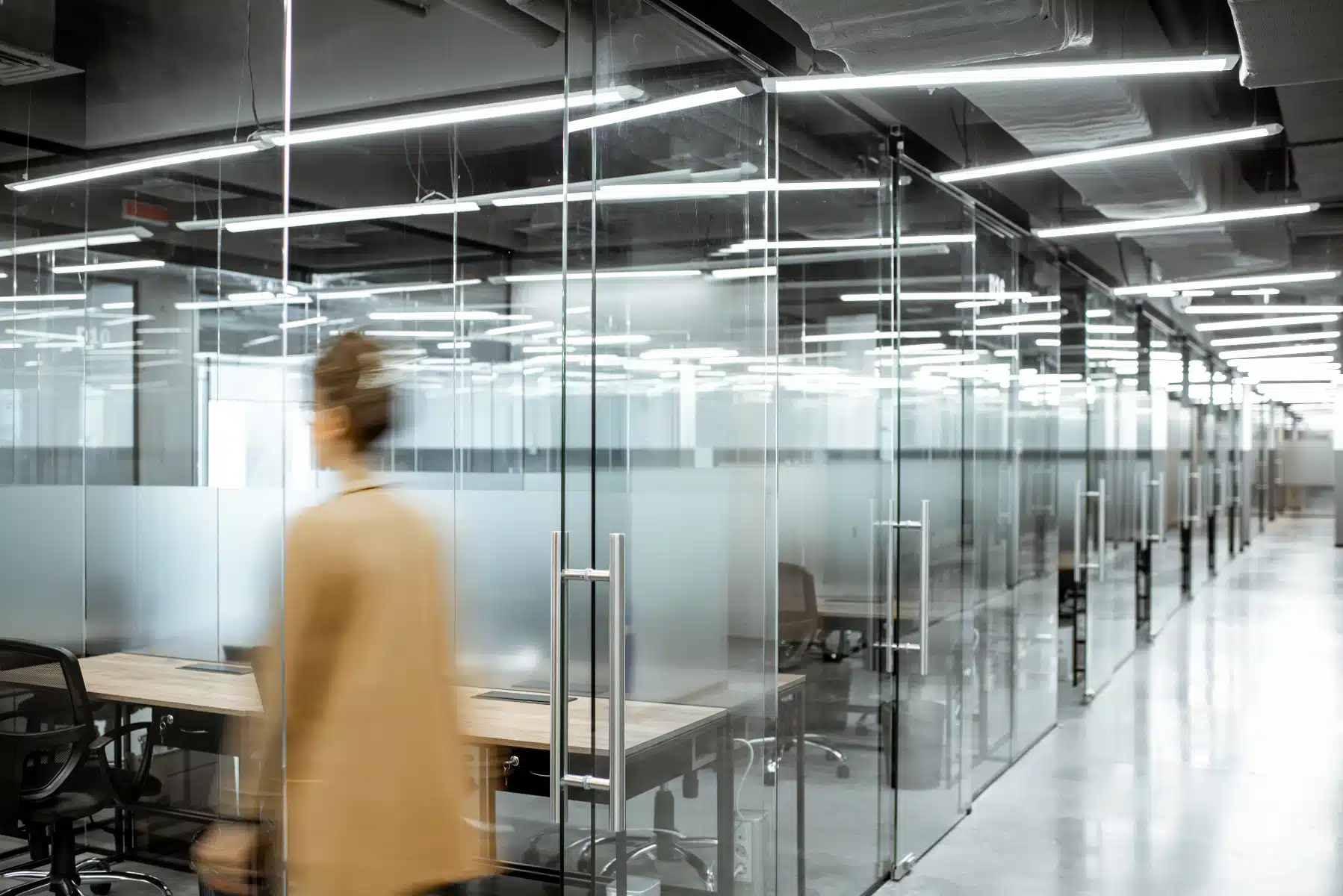Application Swimming pools
Even with the best possible water treatment in swimming pools, unwanted by-products are almost always released from the water surface. Removing these by-products through ventilation with adequate fresh air is essential to achieve healthy air quality. New laws and regulations impose strict requirements for air quality. For instance, the amount of trichloramine in the air at critical locations must be measured annually. Proper air distribution and circulation in the swimming hall are also necessary to maintain good air quality.
In order to create a comfortable climate in swimming halls, the air temperature and relative humidity (RH) are important factors. Too dry air conditions (low RH) in a room make the room feel ‘cold’ to swimmers because moisture on their skin evaporates too quickly, drawing heat from the body. Conversely, overly humid conditions (high RH) feel stuffy and warm, as evaporation slows and the body struggles to cool itself through sweating.

Ventilation requirement with fresh outside air
When discussing ventilation requirements in swimming pools, terms such as circulation rate and ventilation rate are often used. The circulation rate refers to the number of times per hour the room’s air is recirculated, while ventilation rate indicates how often fresh outside air is supplied. These rates must align with the chosen air distribution system (supply air diffusers), which has minimum and maximum airflow capacities. Insufficient airflow results in poor air circulation, while excessive airflow can cause draughts and noise complaints.

Humidity
For a given use of the pool basin and a specified water quality, the air quality depends on the amount of fresh outside air and any play elements in use, such as slides, waterfalls, rapids, and hot tubs. This outdoor air is also used to regulate the humidity level at approximately 50%. There are two main reasons for maintaining the humidity level:
▪ the comfort of staff and users
▪ preventing condensation and corrosion damage to the building and equipment
Moisture from the pool water evaporates into the room air, causing the relative humidity to rise if the amount of ventilation air is insufficient. To maintain the relative humidity at the desired level, the room must be ventilated with drier outside air. The difference between the absolute moisture content (grams of water vapor per kilogram of air) in the outdoor and indoor air determines the amount of outside air required at that moment. All the moisture evaporating from the pool basin must therefore be removed through ventilation.
Amount of water vapour
The amount of moisture evaporating from the pool depends on factors such as pool occupancy, water temperature, air conditions, surface area, and the intensity of water-air interaction (e.g., slides, waterfalls, or hot tubs). Under fixed design conditions and constant occupancy, the amount of water vapor to be removed remains consistent.
This quantity can be calculated using the methodology outlined in the German VDI 2089 Directive.This guideline, developed by the "Verein Deutscher Ingenieure", helps determine the necessary ventilation to remove moisture and regulate humidity in the swimming hall. The capacity of air-conditioning systems is defined accordingly. Alternative methods, such as ASHRAE guidelines, are also available, but VDI 2089 is commonly used.







